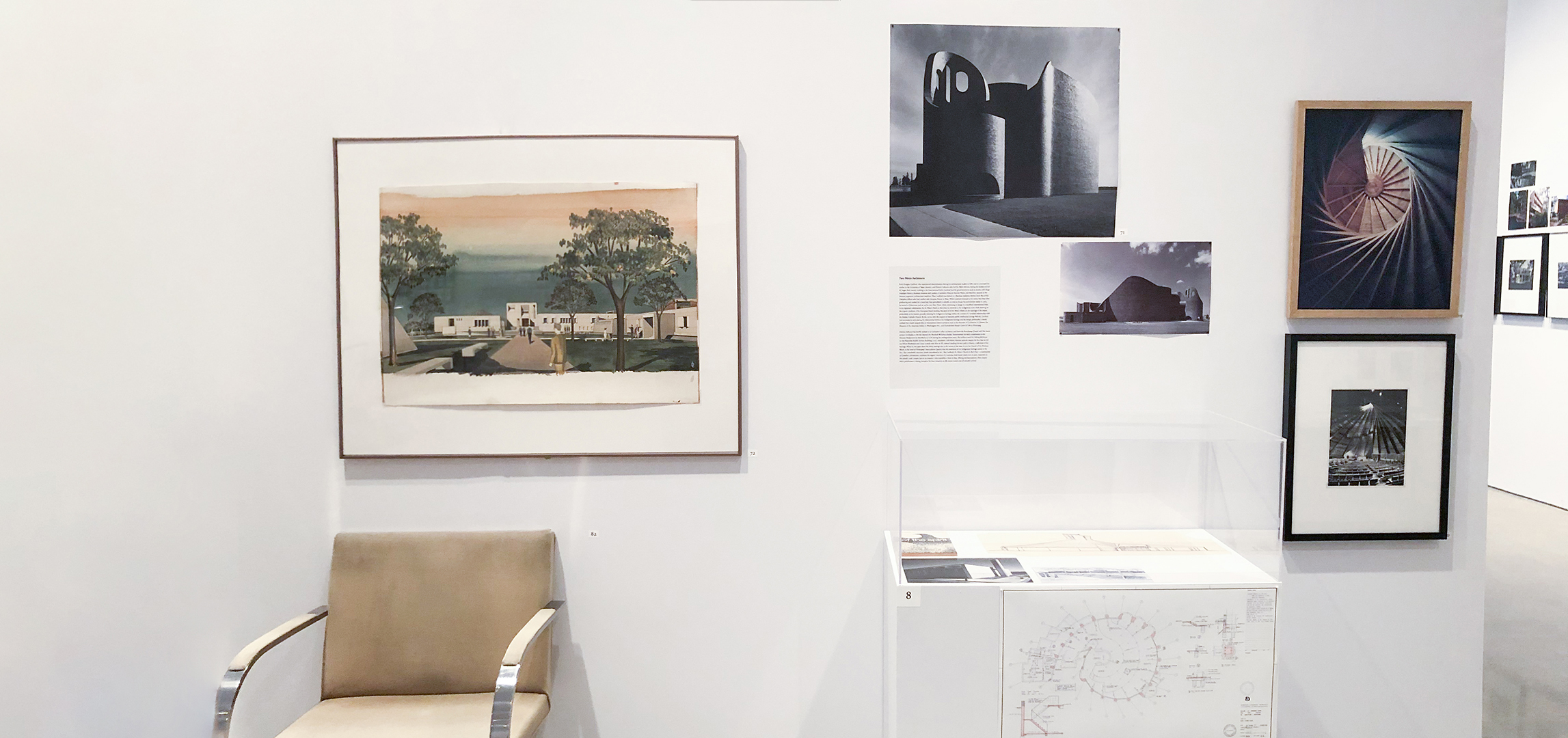By the late 1920s, Group of Seven co-founder Arthur Lismer had adopted both the child-centred pedagogy of Franz Cižek (whose children’s art exhibition he brought to Toronto in 1927) and John Dewey’s philosophy of “learning by doing.” Cižek and Dewey were central to the development of Johannes Itten’s Bauhaus Foundation Course, carried on by Moholy-Nagy and Albers after Itten’s departure in 1923. Guided by these principles, Lismer founded the Children’s Art Centre at the Art Gallery of Toronto in 1933; the Centre’s teachers included Gordon Webber, Erma Sutcliffe and Dorothy Medhurst. It was through his interest in Dewey that Lismer learned of Moholy-Nagy’s Chicago-based New Bauhaus (later “School of Design”) in 1937. Lismer befriended Moholy-Nagy and sent him students, starting with Webber, even selling a painting to finance Webber’s education. Like his fellow Canadian Richard Filipowski, Webber became a School of Design star student, leading Saturday children’s art classes. In 1938 Lismer resigned from the Art Gallery of Toronto, moving to the Montreal Art Association, where he hired Webber. Sutcliffe attended the School of Design’s Summer School at Somonauk, Illinois in 1941, and remembered both Moholy-Nagy and György Kepes as outstanding teachers. Returning to Toronto with a dedicated Moholy-Nagy serigraph, she resumed teaching at Children’s Art Centre, becoming—like another School of Design alumna Dorothy Medhurst—a beloved children’s art teacher.
Along with Andor and Eva (Fernbach) Weininger, photographer, painter and graphic designer Werner David Feist was one of three Bauhäusler to settle in Canada. He pursued a career as a graphic designer, including a stint as President of the Art Directors Club of Montreal. His Bick’s Pickle logo is a Canadian design classic. Like Weininger, Herbert Bayer was a pioneer of Bauhaus typography who did extensive design work, including a campaign for a Quebec ski resort. His International Design Conference at the Aspen Institute in Colorado became a design mecca. Moholy-Nagy’s Metal Workshop students Marianne Brandt and Wilhelm Wagenfeld enjoyed brilliant careers as German designers. Wagenfeld worked for Jenaer Glas, a manufacturer of heat-resistant glass products who hired Moholy-Nagy to advertise their products.
Directed towards the Weaving Workshop, women like Gunta Stölzl, the only female Bauhaus “Master” (her blanket is on display in this gallery) developed it into a site of cutting-edge theory and design. Feist’s close friend Grete Reinhardt is regarded as a successful graduate of the program, which produced textiles that closely paralleled those made at Loheland, one of the longest-lasting women’s communes anywhere.
With the introduction of Breuer’s and Mies’ furniture into shops like Eaton’s and the Robert Simpson Co. in the early 1930s, Canadian design standards improved. Jeannette Meunier Biéler, for example, experimented with tubular steel, glass and canvas desks and chairs. James Donahue began experimenting with furniture at the National Research Council in Ottawa after his graduate studies at Harvard with Breuer, developing the world’s first plastic chair. Donahue continued this work at the University of Manitoba after 1946, producing, with his students, what has become a classic – the “Winnipeg Chair.” It was work like Donahue’s that Donald Buchanan promoted through his Industrial Design Division of the National Gallery of Canada, where, after 1946, he organized travelling exhibitions, established the “Design Index” of “products of merit,” and headed the National Industrial Design Committee.
Milton Osborne hired University of Manitoba architecture graduate Joan Harland to teach interior design as early as 1939, and she founded the county’s first Interior Design department there a decade later, training an outstanding cohort including Grant Marshall and Cynthia Bookbinder. They formed the interiors of Winnipeg’s many new Gropius-, Breuer-, and Mies-inspired buildings and homes. Margaret Stinson, a Gropius graduate student, designed the interiors for Winnipeg’s new City Hall and airport.
Art and design pedagogy in Canada were inspired by texts of Bauhaus/New Bauhaus alumni such as Albers, Giedion, Gropius, Hilberseimer, Itten, Kepes, Kranz, and László and Sibyl Moholy-Nagy. One can discern their importance to Canadian students in the thesis projects of graduates like Valdis Alers, Cynthia Bookbinder, Étienne Gaboury and Harry Seidler, who, prior to postgraduate study or work in the orbit of Gropius, Kepes, Mies and Le Corbusier, already displayed awareness of cutting-edge Modernism.
